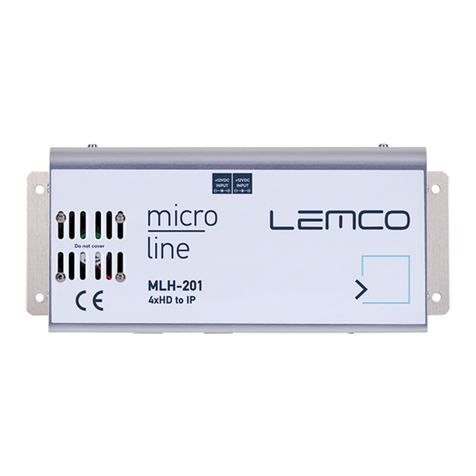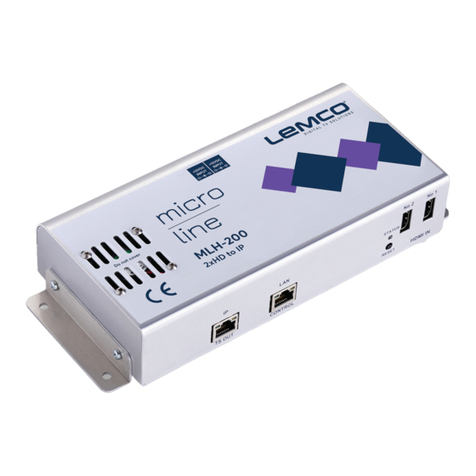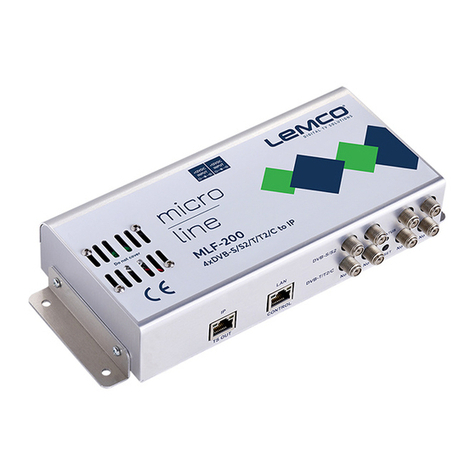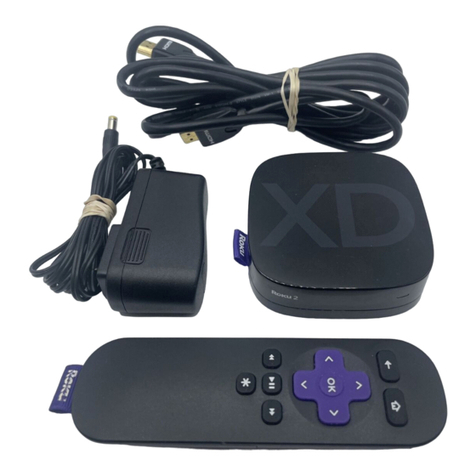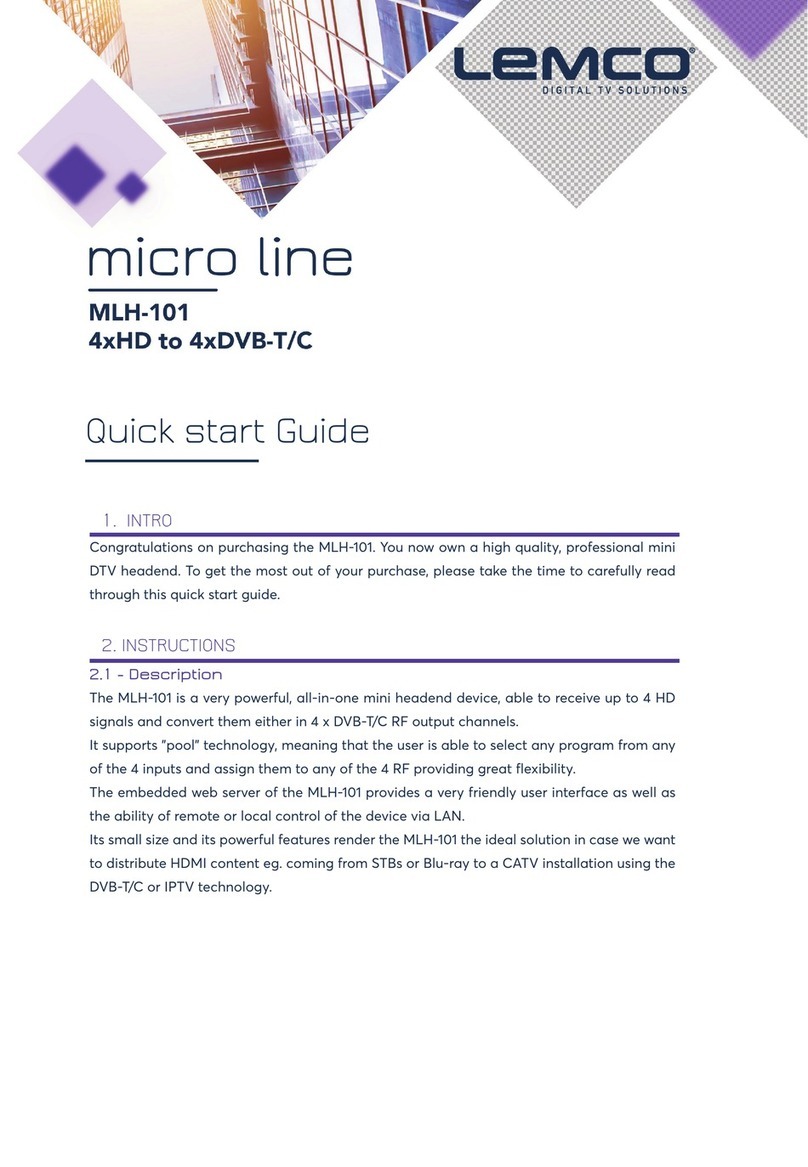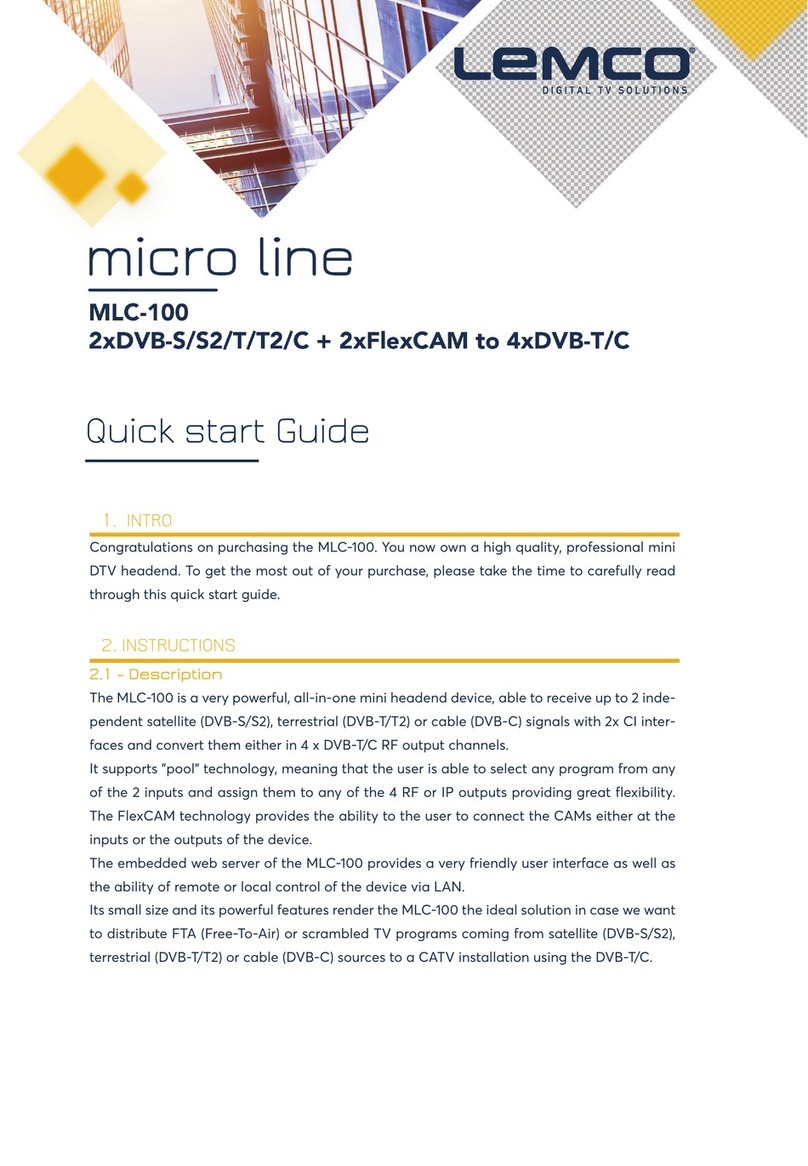4
2. INTRO
Congratulations on purchasing the MLF-301. You now own a high quality, professional
DTV headend. To get the most out of your purchase, please take the time to carefully
read through this manual.
3. INSTRUCTIONS
3.1 - Description
The MLF-301 is a very powerful, all-in-one device, able to receive up to 4 independent
satellite (DVB-S/S2/S2) signals and convert them in 4 x DVB-T/C RF output channels
or in IPTV streaming using UDP/RTP protocols multicast/unicast. The MLF-301 is ca-
pable of receiving any kind of multi-stream signals too. It supports “pool” technology,
meaning that the user is able to select any program from any of the 4 inputs and as-
sign it to any of the 4 RF or IP outputs providing great flexibility.
The embedded web server of the MLF-301 provides a very friendly user interface as
well as the ability of remote or local control of the device via Ethernet.
Its small size and its powerful features render the MLF-301 the ideal solution in cases
we want to distribute FTA (Free-To-Air) TV programs coming from satellite (DVB-
S/S2/S2X) sources to a CATV installation using the DVB-T/C or IP technology.
3.2 - Features
zx w 4 x independent multi-standard inputs DVB-S/S2/S2X
zx w Multi-stream support
zx w 4 x RF output DVB-T/C (software selectable)
zx w Gbit IP streaming (up to 64 x SPTS / 4 x MPTS)
zx w “Pool” technology
zx w MER value > 42dB
zx w Dual power supplies offering redundancy mode
zx w PID Filtering
zx w Custom NIT/SDT
zx w Local or remote control via webserver
zx w Very friendly user interface
zx w Wall or rack mount options
zx w SNMP v2
zx w Ultra-compact size
zx w 5year warranty
3.2.1 - Auto-reset functions and watchdog
During the normal operation of the MLF-301, the main CPU monitors all the internal
parts in order to ensure that the device works normally. In case of an internal error or
module failure, the MLF-301 immediately initiates the recovery procedure by resetting
the appropriate module or the device. Finally, watchdog timers ensure that the device
will be reset in case of CPU failure.












